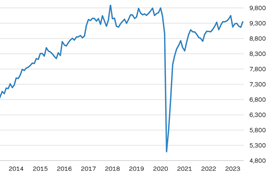- News
Regulations latest
All the latest updates on building safety reform
- Focus
- Comment
- Data
- Programmes
- CPD
- Events
- Jobs
- Subscribe
- Building Boardroom
Explaining the infrastructure levy
By John Wallace 2023-06-05T06:00:00

The proposed new levy, designed to replace section 106 agreements and the CIL, is now to be stuck in pilot phase for a decade. What does this mean for developers?
The infrastructure levy is part of the sweeping reforms to the construction sector being introduced by the Department for Levelling Up, Housing and Communities (DLUHC). It is intended to largely replace the use of section 106 agreements and the community infrastructure levy (CIL). While the levy has its pros and cons, perhaps the biggest problem now is the extreme slowness of its implementation.
The DLUHC issued in March a consultation paper on the infrastructure levy. Its executive summary says the government’s intention is to ensure that local authorities receive a “fairer contribution of the money that typically accrues to landowners and developers…[to] support funding for the infrastructure – affordable housing, schools, GP surgeries, green spaces and transport infrastructure”. So, this is a tax on development.
Read more …
This content is available to REGISTERED users
You are not currently logged in.
LOGIN or REGISTER to access this story

LOGIN or REGISTER for free access on selected stories and sign up for email alerts.
Take out a print and online or online only subscription and you will get immediate access to:
- Breaking industry news as it happens
- Expert analysis and comment from industry leaders
- Unlimited access to all stories, including premium content
- Full access to all our online archive
Get access to premium content subscribe today



















